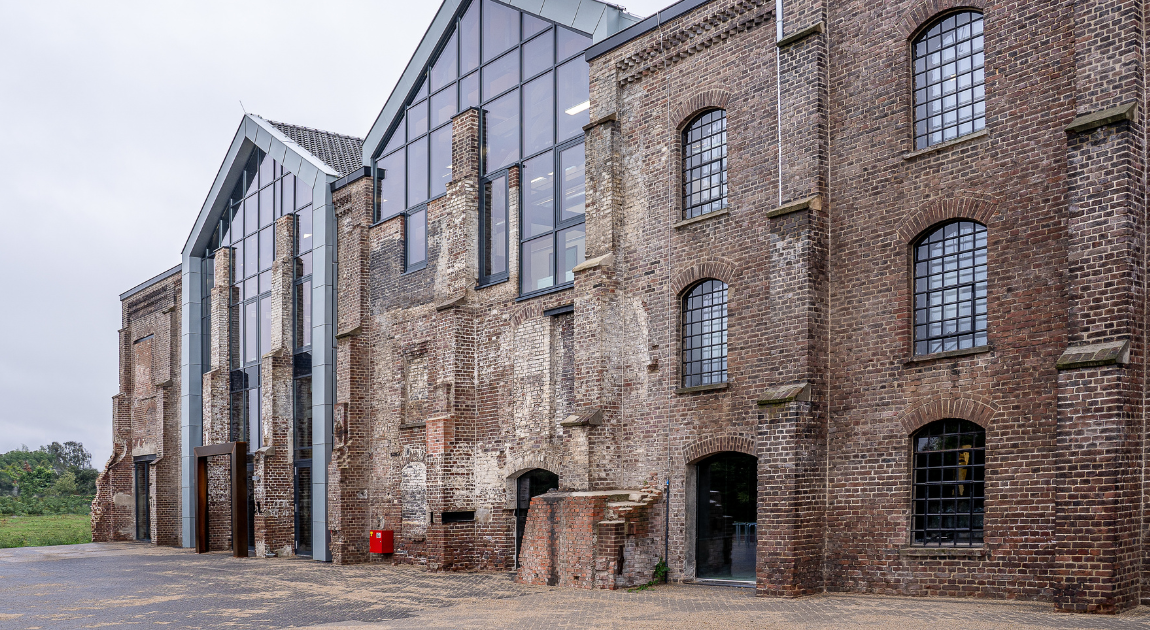The world is getting smaller, and good locations for different facilities are hard to come by… or are they? Brownfield properties, that is, facilities that used to be operational in the past and can become useful once again, are often situated exactly at the spot you as a business would want them to be. The trick is to repurpose them – and that’s where an entire tapestry of opportunities, regulations, and self-reinforcing benefits lie. In this article, we look at the practical side of brownfields redevelopment, its benefits, and the role of technology.
Current state of brownfield redevelopment
Brownfield development is the process of repurposing the previously used or contaminated premises – and as such it has both a huge appeal to businesses and communities, as well as a set of intimidating undertakings needed to make it real. It is not always easy to go “greenfield” and have a stretch of undeveloped land turned into, say, a warehouse or a factory, so having to deal with legacy infrastructure and other factors at play could be daunting for those who have no previous experience.
However, brownfield redevelopment is gaining traction with not just urban planners but investors and businesses alike. In the US alone, the EPA (Environmental Protection Agency) estimates there are over 450K brownfield sites, like disused factories and landfills that can be appropriated for new purposes.
There are, of course, governmental initiatives to encourage brownfields redevelopment, too. In the US, the first federal programs appeared in the 90s, and 2021 then saw the Bipartisan Infrastructure Law, which boosted funding for brownfield cleanup to approximately $300 million targeting 200 high-priority sites.
But even without these, simply the ability to use an often fortuitous location yields good returns: it’s estimated that every $1 invested in brownfields generates $17.49 in economic benefits, while job creation averages 4.8 jobs per redeveloped acre (further making the business conditions better). In a way, brownfields are a now-classical case of niche opportunity that startups and other companies can and do exploit – on the condition they know how to.
Benefits of brownfields for businesses and communities
Typically, brownfield is viewed through the optics of environmentalism and community benefits, but the actual benefits of the practice are more diverse than that and include purely business-related advantages, too. Here are some of the most important advantages of brownfields:
- Access to existing infrastructure. Even if the tech part is all worn out or unadaptable, in many cases, the location is too good to be true – what used to be the outskirts of a city back in the 1960s is often a coveted almost-downtown location now, and the same logic applies to, say, ports, highways, and railroads. Which helps reduce development costs by about 20–30% due to pre-existing utilities and transportation access.
- Financial and tax incentives, grants, etc. In the US, the Brownfields Program has provided over $2.5B in funding since its inception. Meanwhile, in the EU, these incentives are scattered across ERDF, EUI, and other institutions’ competencies, but still quite accessible.
- Property value and job generation. Properties near cleaned-up brownfields can increase in value by 5-15%. This, in turn, means a stronger local economy, increased consumer demand, and better workforce – self-evident benefits for the community, and a pleasant snowballing effect for logistics and manufacturing businesses who start the development.
- Corporate ESG policies and PR value. Commitment to sustainability is important in and by itself, but also attractive to investors and customers alike; unlike many sustainability initiatives, brownfield reuse is along the same vector as operational efficiency, too.
These are the generic benefits; there are more industry-specific ones. For example, in logistics, 3PL providers are often known to “prey upon” urban locations for distribution centers to nail the last-mile delivery challenge – something that also pushes towards considering small-scale brownfields development projects.
Brownfield redevelopment process steps
The main fail/pass factor in brownfield redevelopment projects is to have a balanced vision about the whole thing that will take into account the actual reality on the premises. In other words, you should know enough about the site to be able to plan accordingly. That’s why the process matters a lot. Here are the key phases:
#1 Site identification and feasibility assessment
This is where you identify a viable property based on the core relevant factors: location, access to infrastructure, and so on. Starting from here, you can assess basic feasibility and risks. Public-private partnerships may form early here to evaluate funding opportunities and community support.
#2 Environmental Site Assessment (ESA)
This phase includes:
- Phase I ESA: A historical and visual review of the site to determine the likelihood of contamination.
- Phase II ESA: Involves soil, water, and air testing to confirm the presence and extent of pollutants.
This data informs both regulatory compliance and project design. In the U.S., conducting these assessments also protects developers under the “innocent landowner defense” in the Comprehensive Environmental Response, Compensation, and Liability Act (CERCLA).
#3 Regulatory approvals
One of the best practices is maintaining transparent communication with local communities, as well as the municipal planning authorities. Many jurisdictions offer streamlined permitting processes for brownfield projects, and even come in handy when it comes to engaging the local community and businesses. In other words, getting regulatory aspects right often means better awareness.
#4 Cleanup and remediation planning
In case the terrain is polluted, which it often is, a remediation plan is developed to clean or contain contaminants. Methods may include excavation, groundwater treatment, and such – depending on what’s going to be there and what standards apply.
#5 Site redevelopment and construction
This is the actual building phase: demolition of what’s not needed, utility upgrades, new construction. With brownfield projects, mixed-use or light industrial development approaches are especially popular, depending on location and demand.
#6 Monitoring and maintenance
This is an overlooked phase that is still important if you want good ROI and keep sustainable – post-development maintenance helps ensure things are running smoothly and prevent possible issues from impacting the value of the redesigned property:
- Long-term groundwater monitoring
- Soil vapor intrusion testing
- Maintaining protective barriers or engineered controls (like caps or liners)
#7 Site management and use
This is where the site is operational, and to extract the maximum value, you may want to emphasize its inherent benefits or address the specific weak sides. This is where technology helps a lot, like dedicated customizable WMS, TMS, and other software.
Check out a recent case study on how custom software solutions facilitate construction operations management, allowing to juggle non-standard requirements.
The role of technology in brownfields redevelopment
What’s especially encouraging about brownfields redevelopment in today’s conditions is that many of the traditionally recognized and feared challenges can be at least partially solved with technology. Here are just some of the most prominent tech solutions.
Geographic Information Systems (GIS)
GIS is valuable at the initial stages, where you identify and analyze the sites for development. GIS can help aggregate and put together several layers of data, like proximity to utilities, historical land use and more, so that you get a nicer picture at the very beginning: infrastructure constraints and potential overlaying zoning and land use data risk and return potentials
AI in brownfield management
Artificial intelligence is useful for its ability to aggregate tons of data and make projections into the future, like predicting contamination patterns and coming up with optimal redevelopment scenarios. Besides predictive models and analytics, NLP is also used to analyze regulatory reports and other documents and make compliance reviews faster (which helps when applying for funding).
Digital twinning
Just like in manufacturing a digital twin can emulate an actual piece of machinery in context, in brownfield development, digital twins can provide a virtual model for a physical site. In this way, you can simulate various remediation strategies and infrastructure upgrades to make sure the chosen course of action entails no serious risks. A notable example is the use of digital twins in the Thames Estuary 2100 project in the UK, where legacy industrial land is being redeveloped in flood-prone areas, requiring precise modeling of land-use, water flow, and infrastructure resilience.
IoT solutions
IoT technologies enable continuous monitoring of brownfield properties before, during, and after development. Sensors embedded in soil, air, or groundwater can detect:
- Volatile organic compounds (VOCs)
- Soil moisture and stability
- Gas emissions or vapor intrusion
- Changes in groundwater chemistry
These real-time data streams support proactive risk management, while after redevelopment, IoT can also monitor energy efficiency, building performance, and environmental compliance.
Industry-specific software
When the site is operational, it may have some unique features that impact the workflows. For example, a warehouse with a peculiar layout, a factory or farm that is close to certain infrastructure, and so on – such idiosyncrasies are exploitable for business goals. And this is where custom software that is used by the company (ERP, WMS, TMS, etc.) can make a huge difference by either suppressing or supporting the new and interesting operational lifehacks that emerge.
Eliciting maximum ROI from brownfield sites
Since the risks of brownfield redevelopment have been mitigated with better technology, more companies have been interested in this strategy. This, in turn, has generated a bunch of best practices and tips that help achieve a better return on investment. Here are some of the more important ones:
- Align with market demand for today and 5 years in the future. Many successful projects tend to focus on light industrial and logistics hubs near transport corridors, mixed-use developments, and housing development in the area.
- Leverage incentives and grants. Of course, there is no guarantee that exactly the site each business wants will be eligible for exactly the right program, but it’s unreasonable not to learn more about low-interest remediation loans, brownfield grants, and tax benefits, which can provide for a risk mitigation “pillow”.
- Integrate sustainability for long-term play. While brownfields are, in a way, already a sustainable practice, it is even better to build in energy efficiency and smart infrastructure to further reinforce this. If it’s a housing project, this attracts environmentally conscious tenants; if it’s a logistics hub, it allows to test optimization strategies to transplant to further locations, etc.
- Consider community partnerships. After all, the project is likely changing something for the nearest community, either in the way of creating jobs or public spaces, etc. – so local buy-in helps reduce delays, builds awareness and contributes to having the community build their own businesses around the facility.
- After starting operations, notice the new operational know-hows that emerge and make it part of business culture to assess them and possibly support them. Such new and creative developments can be valuable and scalable.
Conclusions
Brownfield redevelopment is no longer a niche or experimental strategy—it’s a proven, sustainable approach to reclaiming valuable land in high-potential locations. For logistics, manufacturing, and industrial businesses, the ability to access existing infrastructure, leverage location advantages, and meet sustainability goals makes brownfields a compelling choice.
To fully unlock the potential of a brownfield site, businesses need more than just a blueprint—they need the right digital tools to adapt to the site’s unique conditions. Legacy layouts, uneven infrastructure, or unusual workflows can quickly become assets when supported by custom software solutions. Whether it’s a tailored warehouse management system (WMS), a transportation management system (TMS), or a site-specific ERP, custom platforms ensure the redeveloped facility runs at peak performance from day one.
This is especially true in logistics and supply chain operations, where the smallest efficiency gains translate into substantial savings and strategic advantages. Brownfields offer the opportunity, but custom software makes it scalable, flexible, and future-ready. At Lionwood.software, we specialize in logistics and infrastructure solutions tailored to unique environments – let’s talk about how we can help you turn a reclaimed site into a high-performance asset.












